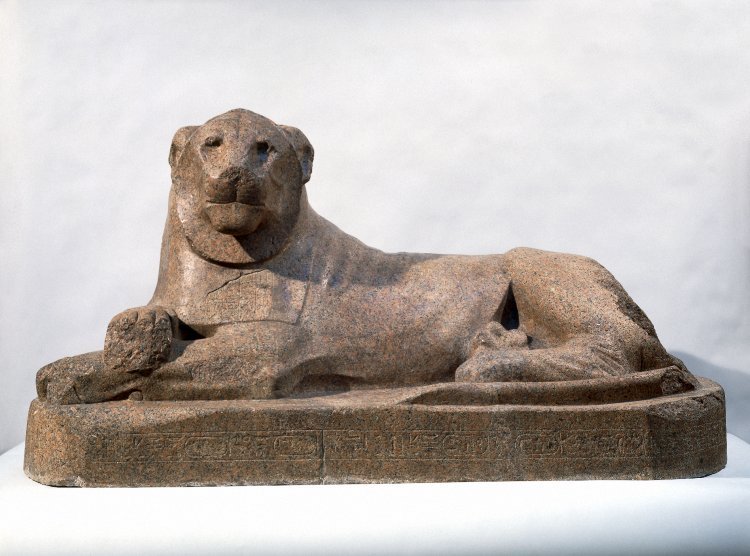
Red granite lion of Amenhotep III
From Soleb, Sudan
18th Dynasty, around 1370 BCE
A lion with many names….
This lion is one of a pair collected from the Meroitic site of Gebel Barkal by Lord Prudhoe, which is why they are sometimes called ‘Prudhoe lions’. Originally from the Temple of Soleb in Nubia, the lions acted as guardian figures before a temple built by Amenhotep III (1390-1352 BCE), an elaborate monument to the cult of the king as a deified 'lord of Nubia’, embodied by the lion.
The inscriptions on both lions reflect their re-use by many rulers. Originally inscribed by Amenhotep III, they were renewed by Tutankhamun (1336-1327 BCE), along with an indication that they were moved by his successor Ay (1327-1323 BCE). In the third century BCE the Meroitic ruler Amanislo moved the lions south to his city of Gebel Barkal and engraved his names on them. …
Also from the British Museum website:
Red granite statue of lion of Amenhotep III:
This lion is depicted in a recumbent pose, forming a mirror image to its companion piece. It lies on its side: the forepaws crossed, the farther of the hind paws emerging from under the nearer one, the tail curling forward around the rump and resting on the base. The sculpture combines marvelously the stylized mane and hair with a naturalistic treatment of the body. The muzzle projects realistically, with solid jawbones and raised veins. A stylized circular mane frames the head, and the fur is rendered by a raised surface on the chest, the shoulders, and the back. The eyes are hollowed and were probably inlaid. The whiskers are incised on the muzzle; small, round protuberances in the ear suggest the tufts of hair.
The naturalistic treatment of the physiognomy is enhanced by anatomical details - for example, the twisted hind paws, of which the farther one is turned upward. On the external side of the paws, the folds are marked by deep furrows. The rump is treated with a bold modeling of musculature; and parallel depressions alternate with raised ribs on the flank.
The lion was later reinscribed several times. First a four-column text was engraved on the breast, identifying the monument as “The good god, lion of rulers, wild when he sees his enemies treading his path, [it is the king] … divine ruler of Thebes, who brought it.” The royal cartouche, in which only the last signs are preserved, could belong to Akhenaten. Shortly afterward, a text of Tutankhamun’s was inscribed on the base, stating that the king renewed this monument for Amenhotep III. Ultimately, during the reuse of these lions in Gebel Barkal, the two cartouches of the Kushite ruler Amanislo were added on both lions. These cartouches occupy the left forepaw, because of the anterior four-column inscription. It was probably also at that time that the names of Tutankhamun in the third and fourth cartouches on the base were erased (with the exception of “Amun” and a remnant of “ankh”) to be replaced by those of Amanislo, on a plaster patch that is now lost, leaving the original particle of Amun, common to both names.
Ed. Note: Oh, and they’re 111cm (43.7in) high, 216cm (85in) long, and each weigh about 5000 pounds (2268kg)!!!
http://www.britishmuseum.org/explore/highlights/highlight_objects/aes/r/red_granite_lion.aspx
